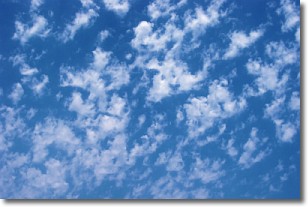Weather Alert in Wisconsin
Air Quality Alert issued August 11 at 8:33AM CDT by NWS Twin Cities/Chanhassen MN
AREAS AFFECTED: Polk; Barron; Rusk; St. Croix; Pierce; Dunn; Pepin; Chippewa; Eau Claire
DESCRIPTION: The Wisconsin Department of Natural Resources has issued an Air Quality Advisory for the following counties: Adams, Ashland, Barron, Bayfield, Brown, Buffalo, Burnett, Chippewa, Clark, Door, Douglas, Dunn, Eau Claire, Florence, Forest, Iron, Jackson, Juneau, Kewaunee, La Crosse, Langlade, Lincoln, Marathon, Marinette, Menominee, Monroe, Oconto, Oneida, Outagamie, Pepin, Pierce, Polk, Portage, Price, Rusk, Sawyer, Shawano, St. Croix, Taylor, Trempealeau, Vernon, Vilas, Washburn, Waupaca, Waushara, Wood. WHAT...The PM2.5 AQI is expected to reach the Unhealthy for Sensitive Groups (Orange) to Unhealthy (Red) level. WHERE...Northern Wisconsin and west-central Wisconsin. WHEN...From 10 AM Monday until 3 PM Tuesday. Precautionary/Preparedness Actions: Sensitive groups: Make outdoor activities shorter and less intense. It is OK to be active outdoors but take more breaks. Watch for symptoms such as coughing or shortness of breath. People with asthma: Follow your asthma action plan and keep quick relief medicine handy. People with heart disease: Symptoms such as palpitations, shortness of breath, or unusual fatigue may indicate a serious problem. If you have any of these, contact your health care provider. Additional Details: Canadian wildfire smoke will impact surface air quality as it moves ENE across northern portions of the state later Monday morning through early Tuesday afternoon. The heaviest smoke impacts are expected in far northwest Wisconsin, where PM2.5 NowCast AQI values of Unhealthy (Red) will be possible. Lesser impacts in the Moderate (Yellow) to Unhealthy for Sensitive Groups (Orange) AQI range are expected further south and east in the advisory area. A cold front moving in from the northwest on Tuesday morning will begin to clear this initial round of smoke from northwest to southeast. Although more smoke could move in behind the front, we do not expect advisory criteria to be met with the second round of smoke at this time. For more information on current air quality, please see: https://airquality.wi.gov
INSTRUCTION: N/A
Want more detail? Get the Complete 7 Day and Night Detailed Forecast!
Current U.S. National Radar--Current
The Current National Weather Radar is shown below with a UTC Time (subtract 5 hours from UTC to get Eastern Time).

National Weather Forecast--Current
The Current National Weather Forecast and National Weather Map are shown below.

National Weather Forecast for Tomorrow
Tomorrow National Weather Forecast and Tomorrow National Weather Map are show below.

North America Water Vapor (Moisture)
This map shows recent moisture content over North America. Bright and colored areas show high moisture (ie, clouds); brown indicates very little moisture present; black indicates no moisture.

Weather Topic: What is Evaporation?
Home - Education - Precipitation - Evaporation
 Next Topic: Fog
Next Topic: Fog
Evaporation is the process which returns water from the earth
back to the atmosphere, and is another crucial process in the water cycle.
Evaporation is the transformation of liquid into gas, and it happens because
molecules are excited by the application of energy and turn into vapor.
In order for water to evaporate it has to be on the surface of a body of water.
Next Topic: Fog
Weather Topic: What are Fractus Clouds?
Home - Education - Cloud Types - Fractus Clouds
 Next Topic: Freezing Rain
Next Topic: Freezing Rain
A fractus cloud (scud) is a fragmented, tattered cloud which has
likely been sheared off of another cloud. They are accessory clouds, meaning they
develop from parent clouds, and are named in a way which describes the original
cloud which contained them.
Fractus clouds which have originated from cumulus clouds are referred to as
cumulus fractus, while fractus clouds which have originated from stratus clouds
are referred to as stratus fractus. Under certain conditions a fractus cloud might
merge with another cloud, or develop into a cumulus cloud, but usually a
fractus cloud seen by itself will dissipate rapidly.
They are often observed on the leading and trailing edges of storm clouds,
and are a display of wind activity.
Next Topic: Freezing Rain
Current conditions powered by WeatherAPI.com




